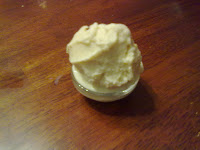There are many ways to make chocolates with minimal effort. However, making quality chocolate will require a little more work. To make chocolate the easy way, simply melt baking chocolate, stir in a little natural shortening, mix with nuts and then drop spoonfuls on wax paper. This way of making chocolate is entirely acceptable, but the problem you'll find is the chocolates do not keep well. Adding shortening softens the chocolate, but the chocolates will melt easily when left out of the refrigerator. Furthermore, chocolates left out for a day or two will develop a gritty texture. So, if you've tried this method and are ready for the next step, you may be in for a little more work. However, the extra effort is well worth it.
Choosing The Right Type of Chocolate
The First Step will be choosing the right type of chocolate. Chocolates made with baking chocolate, chocolate chips, and chocolate bars will end up with a bad texture if left at room temperature. When making high quality chocolates, you must find chocolate that is called
"Couverture" chocolate. This is usually sold in big blocks or little medallions. Although, couverture chocolate rarely has artificial ingredients, some included artificial vanilla. So be sure to check the ingredients or the manufacture website before purchasing.
Where to Find Couverture Chocolate
If you usually buy chocolate in a grocery store, you may find it a little more difficult to find couverture. There are plenty of options to choose from when looking on-line; however, it may not always be the right time of year to ship chocolate. Some distributors will only ship in times of the year when it is cool enough and some will charge you extra to pack the chocolate with special cold packs. A good price for couverture chocolate is anywhere from $10 to $12 a pound. Paying for shipping and packing materials will make it much more pricy. Overall, the best way to get couverture chocolate is to find a local specialty store that sells it. I googled
gourmet stores,
chocolate shops, and
confectionery shops. Most of these places will only sell prepared chocolates, but don't be afraid to ask around. I called a local chocolate shop and the owner gave me the name and address of a nearby coffee shop that also sold candy and couverture chocolate.
How to Make Chocolate with Couverture
Once you find your couverture chocolate, it is time to start making chocolates. When making the easy chocolates, all you had to do is melt it and you were pretty much done. However, with couverture, you will need to
temper the chocolate. This process can be a little tricky, but not impossible. I had good results after my second attempt. I recommend reading several different guides to tempering chocolate before trying it.
Tempering Chocolate
- Use a double boiler or a mettle bowl over a pan of water.
- Chop one half pound of chocolate. Set aside one third of the chopped chocolate and put the other two thirds in the double boiler or metal bowl.
- Slowly heat the chocolate. I heat it on medium-low or (the 4 setting). Stir chocolate as it begins to melt. There are exact temperatures you can use for when to remove the chocolate; however, you can tell that the temperature has been reached once the majority of the chocolate in the pan has melted.
- Remove the pan and set it on top of a paper towel to dry the bottom. It is important never to let water get in the chocolate. Water or steam can cause the chocolate to clump. So it is also best to get the chocolate away from the stove as in case the water in the double boiler has come to a boil.
- Stir in the remainder of the chocolate and continue stirring with a spatula until it is all melted.
- Continue string until the mixture is shiny. This is the hard part since you will need to continue stirring for 15 minutes. The first time I tried tempering chocolate, I thought I was done stirring the chocolate after 5 minutes. However, this was not sufficient and the chocolate ended up with a gritty texture. Your arm may feel like its going to fall off, but it is important to keep stirring for at least 15 minutes. The chocolate also needs to cool to a point where it does not appear easy to pour.
- Once your chocolate gets to this point, you should slowly reheat the chocolate so that it can be poured into molds. The best way to do this is by placing it on the double boiler on low (setting 3 or 4) and stir every few minutes.
- At this point, your chocolate will be ready to pour into molds. Once the molds are ready, refrigerate or freeze them until they are firm (approximately 5 minutes). Then turn the molds out and wrap the individual chocolates in wrapping foil.
- Testing your tempering. I like to test how I have done with tempering by leaving a few pieces of chocolate out of the refrigerator. I take a bite the first day, second day, and third day to see how the texture is. If you tempering was a success, the chocolate should still have a smooth texture on the third day. If it was not tempered well, then the texture will be gritty.






